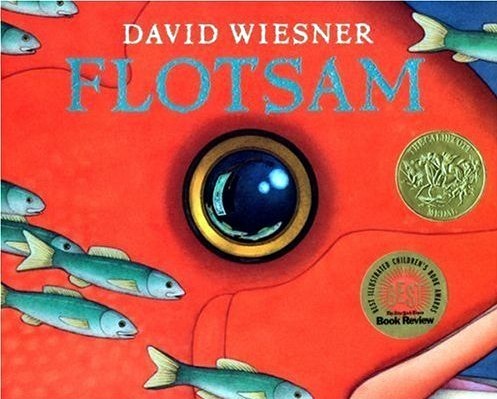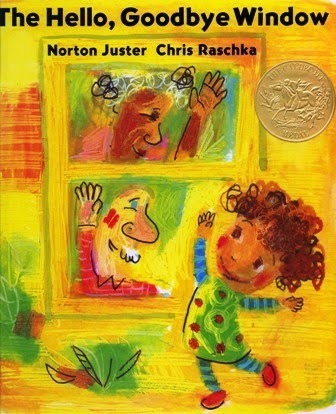Hollye Jacobs's Blog, page 18
June 16, 2014
Tough Bond


Tough Bond
Ok, get ready for a realistic, honest, and – quite honestly – heart wrenching film that is a MUST SEE. It opened my eyes to the devastating realities that are occurring among the children in Kenya. Tough Bond is told through the eyes of 4 Kenyan children who have been neglected by their communities, living in the cracks of society, and seeking to invent a new way to survive on the streets. The children consider themselves survivors of their time as they seek to create a new tribe for themselves while as they cope with everyday life. One of the things that is most inspiring is their incorporation of humor amidst the struggle.
Here is the link to the Tough Bond trailer: https://www.youtube.com/results?search_query=tough+bond+trailer
I am so happy to see that this film is having an impact on it’s viewers. In turn, it’s supporters are raising money for the Tough Bond Kenya Tour. This tour will travel for 30 days throughout different areas in Kenya, ensuring that the message of Tough Bond continues to be echoed through the communities. The tour is also focusing on working with local action groups to bring kids off the streets and into loving homes. That would be a major Silver Lining!!!
Here is the link to their website for more information: http://www.stayclassy.org/events/tough-bond-kenya-tour-2014/e33416
The post Tough Bond appeared first on The Silver Pen.
Facebook: https://www.facebook.com/TheSilverPen
Twitter: https://twitter.com/hollyejacobs
Google Plus: https://plus.google.com/1042044534272...
June 13, 2014
This Weekend: Choose Health
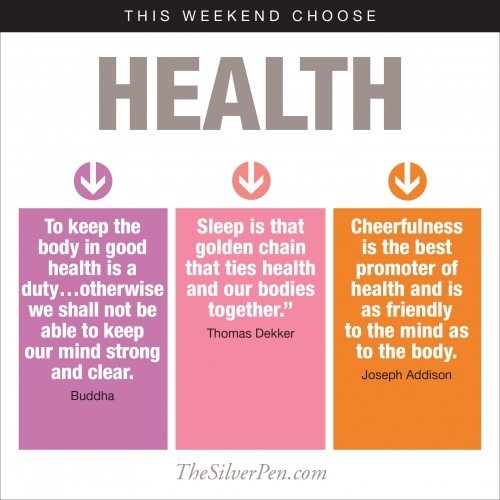

This Weekend: Choose Health
The post This Weekend: Choose Health appeared first on The Silver Pen.
Facebook: https://www.facebook.com/TheSilverPen
Twitter: https://twitter.com/hollyejacobs
Google Plus: https://plus.google.com/1042044534272...
June 12, 2014
What, How, Where, Why and What to Do of Metastatic Breast Cancer?


Metastatic Breast Cancer?
It has been a while since I have written about metastatic cancer, but after having met so many (amazing & inspiring!) people on the book tour with metastatic cancer, I have decided to write more about it, to share information and, most of all, hope for those living with it.
Let’s start with the basics: WHAT? HOW? WHERE? WHY? WHAT TO DO?
WHAT?Described simply, metastatic cancer is cancer that spreads from the place where it first started to another place in the body. The spread of cancer to a new part of the body is called metastasis. It is also called stage IV or advanced breast cancer.
HOW?So how the f-bomb does cancer spread, you wonder? Quite easily, I’m afraid. Here’s how it works: cancer cells break away from the primary tumor and travel to other parts of the body through the bloodstream or the lymph system. Many of the cancer cells die during transportation, but some attach themselves to the wall of a blood or lymph vessel and move into a new organ where they settle and begin growing into new tumors. The cancer cells find a location in the body where they can grow, thrive, and avoid attacks from the body’s immune system. The ability of cancer cells to successfully metastasize depends on its individual properties. In other words, just because cancer cells reach a new location does not mean they will begin to grow into tumors. In some cases, the cancer cells lie dormant for many years in the new location before they grow, if at all. Interesting, right?
WHERE?The spread of cancer is not a haphazard process. The most common sites for metastatic breast cancer are the bones, lungs, liver, or brain. Metastatic breast cancer usually occurs months or years after a person has completed treatment for stage I, II, or III breast cancer. The risk of breast cancer reoccurring varies from person to person and generally depends on the biology of the tumor and the stage of the breast cancer at the time of the original diagnosis.
WHY?Unfortunately, there isn’t always an answer. The risk of breast cancer spreading to other parts of the body varies from person to person. It generally depends on the biology of the tumor and the stage of the breast cancer at the time of the original diagnosis. There are clinical and lifestyle things that can be done to reduce the risk of this happening, e.g., healthy eating, maintaining a healthy weight, aromatase inhibiting medication, oophorectomy (the surgical removal of ovaries).
WHAT TO DO?The Silver Lining here is that even though the cancer is incurable, it is treatable. People live long and full lives with metastatic cancer. Treatment for metastatic breast cancer generally depends on the size and location of the metastases, certain features of the tumor cells, your age and general health, the types of treatment you may have had in the past, and your current symptoms. Common treatments include chemotherapy, biological therapy, targeted therapy, hormonal therapy, surgery, and radiation.Patients may also want to consider participating in a clinical trail in order to help researcher’s learn more about metastatic breast cancer and how to treat it. Some new treatments are only available through a clinical trial. I highly suggest asking your doctors to help you weigh the pros and cons of participation.
If you have metastatic cancer, I would love to hear your story and to learn what helps you and what doesn’t.
The post What, How, Where, Why and What to Do of Metastatic Breast Cancer? appeared first on The Silver Pen.
Facebook: https://www.facebook.com/TheSilverPen
Twitter: https://twitter.com/hollyejacobs
Google Plus: https://plus.google.com/1042044534272...
June 11, 2014
The Daily Routines of Geniuses
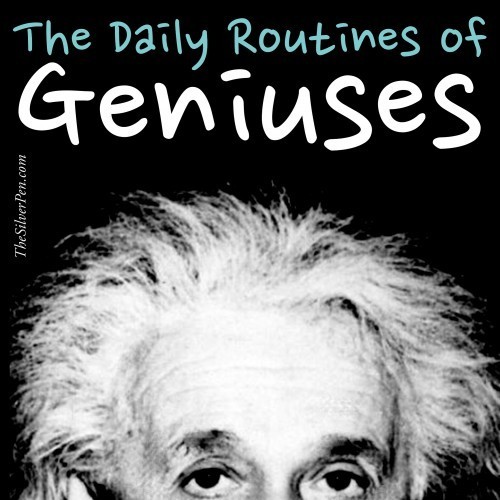

The Daily Routines of Geniuses
At my last speaking engagement, the person who presented me is a member of Mensa. When I leaned over to my friend and asked, “WTF is Mensa,” she smiled and said, “It is the society for geniuses.” Well, clearly I am not a member!” The Silver Lining is that I could laugh about it!
The one thing that I do share with geniuses is a love of daily routines. Traveling this spring put a little crimp in that style, but I did try my best to create mobile routines, e.g., tea every morning, jumping jacks and push ups as soon as I got out of bed…that sort of thing.
Recently I came across a great article by Sarah Green (a senior associate editor at Harvard Business Review) on the HBR blog network discussing the daily routines of geniuses. I thought that I would share this post with you because I found it interesting, inspiring and aspirational.
The Daily Routines of Geniuses by Sarah Green
Juan Ponce de León spent his life searching for the fountain of youth. I have spent mine searching for the ideal daily routine. But as years of color-coded paper calendars have given way to cloud-based scheduling apps, routine has continued to elude me; each day is a new day, as unpredictable as a ride on a rodeo bull and over seemingly as quickly.
Naturally, I was fascinated by the recent book, Daily Rituals: How Artists Work. Author Mason Curry examines the schedules of 161 painters, writers, and composers, as well as philosophers, scientists, and other exceptional thinkers.
As I read, I became convinced that for these geniuses, a routine was more than a luxury — it was essential to their work. As Currey puts it, “A solid routine fosters a well-worn groove for one’s mental energies and helps stave off the tyranny of moods.” And although the book itself is a delightful hodgepodge of trivia, not a how-to manual, I began to notice several common elements in the lives of the healthier geniuses (the ones who relied more on discipline than on, say, booze and Benzedrine) that allowed them to pursue the luxury of a productivity-enhancing routine:
A workspace with minimal distractions. Jane Austen asked that a certain squeaky hinge never be oiled, so that she always had a warning when someone was approaching the room where she wrote. William Faulkner, lacking a lock on his study door, just detached the doorknob and brought it into the room with him — something of which today’s cubicle worker can only dream. Mark Twain’s family knew better than to breach his study door — if they needed him, they’d blow a horn to draw him out. Graham Greene went even further, renting a secret office; only his wife knew the address or telephone number. Distracted more by the view out his window than interruptions, if N.C. Wyeth was having trouble focusing, he’d tape a piece of cardboard to his glasses as a sort of blinder.
A daily walk. For many, a regular daily walk was essential to brain functioning. Soren Kierkegaard found his constitutionals so inspiring that he would often rush back to his desk and resume writing, still wearing his hat and carrying his walking stick or umbrella. Charles Dickens famously took three-hour walks every afternoon — and what he observed on them fed directly into his writing. Tchaikovsky made do with a two-hour walk, but wouldn’t return a moment early, convinced that cheating himself of the full 120 minutes would make him ill. Beethoven took lengthy strolls after lunch, carrying a pencil and paper with him in case inspiration struck. Erik Satie did the same on his long strolls from Paris to the working class suburb where he lived, stopping under streetlamps to jot down notions that arose on his journey; it’s rumored that when those lamps were turned off during the war years, his productivity declined too.
Accountability metrics. Anthony Trollope only wrote for three hours a day, but he required of himself a rate of 250 words per 15 minutes, and if he finished the novel he was working on before his three hours were up, he’d immediately start a new book as soon as the previous one was finished. Ernest Hemingway also tracked his daily word output on a chart “so as not to kid myself.” BF Skinner started and stopped his writing sessions by setting a timer, “and he carefully plotted the number of hours he wrote and the words he produced on a graph.”
A clear dividing line between important work and busywork. Before there was email, there were letters. It amazed (and humbled) me to see the amount of time each person allocated simply to answering letters. Many would divide the day into real work (such as composing or painting in the morning) and busywork (answering letters in the afternoon). Others would turn to the busywork when the real work wasn’t going well. But if the amount of correspondence was similar to today’s, these historical geniuses did have one advantage: the post would arrive at regular intervals, not constantly as email does.
A habit of stopping when they’re on a roll, not when they’re stuck. Hemingway puts it thus: “You write until you come to a place where you still have your juice and know what will happen next and you stop and try to live through until the next day when you hit it again.” Arthur Miller said, “I don’t believe in draining the reservoir, do you see? I believe in getting up from the typewriter, away from it, while I still have things to say.” With the exception of Wolfgang Amadeus Mozart — who rose at 6, spent the day in a flurry of music lessons, concerts, and social engagements and often didn’t get to bed until 1 am — many would write in the morning, stop for lunch and a stroll, spend an hour or two answering letters, and knock off work by 2 or 3. “I’ve realized that somebody who’s tired and needs a rest, and goes on working all the same is a fool,” wrote Carl Jung. Or, well, a Mozart.
A supportive partner. Martha Freud, wife of Sigmund, “laid out his clothes, chose his handkerchiefs, and even put toothpaste on his toothbrush,” notes Currey. Gertrude Stein preferred to write outdoors, looking at rocks and cows — and so on their trips to the French countryside, Gertrude would find a place to sit while Alice B. Toklas would shoo a few cows into the writer’s line of vision. Gustav Mahler’s wife bribed the neighbors with opera tickets to keep their dogs quiet while he was composing — even though she was bitterly disappointed when he forced her to give up her own promising musical career. The unmarried artists had help, too: Jane Austen’s sister, Cassandra, took over most of the domestic duties so that Jane had time to write — “Composition seems impossible to me with a head full of joints of mutton & doses of rhubarb,” as Jane once wrote. And Andy Warhol called friend and collaborator Pat Hackett every morning, recounting the previous day’s activities in detail. “Doing the diary,” as they called it, could last two full hours — with Hackett dutifully jotting down notes and typing them up, every weekday morning from 1976 until Warhol’s death in 1987.
Limited social lives. One of Simone de Beauvoir’s lovers put it this way: “there were no parties, no receptions, no bourgeois values… it was an uncluttered kind of life, a simplicity deliberately constructed so that she could do her work.” Marcel Proust “made a conscious decision in 1910 to withdraw from society,” writes Currey. Pablo Picasso and his girlfriend Fernande Olivier borrowed the idea of Sunday as an “at-home day” from Stein and Toklas — so that they could “dispose of the obligations of friendship in a single afternoon.”
This last habit — relative isolation — sounds much less appealing to me than some of the others. And yet I still find the routines of these thinkers strangely compelling, perhaps they are so unattainable, so extreme. Even the very idea that you can organize your time as you like is out of reach for most of us — so I’ll close with a toast to all those who did their best work within the constraints of someone else’s routine. Like Francine Prose, who began writing when the school bus picked up her children and stopped when it brought them back; or T.S. Eliot, who found it much easier to write once he had a day job in a bank than as a starving poet; and even F. Scott Fitzgerald, whose early writing was crammed in around the strict schedule he followed as a young military officer. Those days were not as fabled as the gin-soaked nights in Paris that came later, but they were much more productive — and no doubt easier on his liver. Being forced to follow the ruts of someone else’s routine may grate, but they do make it easier to stay on the path.
And that of course is what a routine really is — the path we take through our day. Whether we break that trail yourself or follow the path blazed by our constraints, perhaps what’s most important is that we keep walking.
I couldn’t agree more! Do you have any favorite routines?
The post The Daily Routines of Geniuses appeared first on The Silver Pen.
Facebook: https://www.facebook.com/TheSilverPen
Twitter: https://twitter.com/hollyejacobs
Google Plus: https://plus.google.com/1042044534272...
June 10, 2014
Caldecott Medal Winners
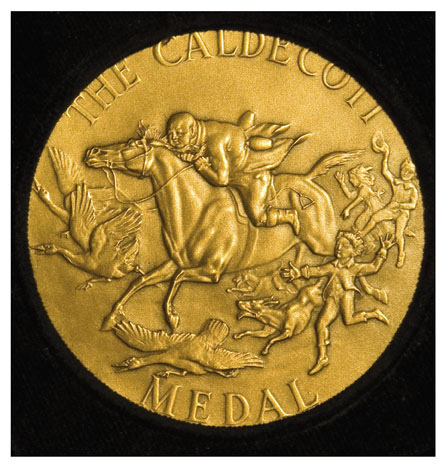

Caldecott Medal Winners
As I find myself looking for summertime reading for our daughter (a.k.a. Excitedly Eight) I am always drawn to Caldecott winners. Even though she is reading chapter books now, who doesn’t love a wonderful picture book? Some of the best lessons can be learned from them – well, at least I think so!
The Caldecott medal was created to honor and encourage artists creating picture books for children. It is awarded to the artist who creates the most distinguished picture book of the year. This medal is awarded annually by the Association for Library Service to Children, a division of the American Library Association.
The medal is named in honor of early nineteenth-century English illustrator, Randolph J. Caldecott. His children’s illustrations were unique in their humor and ability to create a sense of movement, vitality, and action that beautifully complimented the stories they accompanied.
Thought you might be interested in seeing the past 10 winners of the Caldecott Award:
2014- Locomotive, written and illustrated by Brian Floca (Atheneum Books for Young Readers, an imprint of Simon & Schuster Children’s Publishing)
2013- This Is Not My Hat, written and illustrated by Jon Klassen (Candlewick Press)
2012- A Ball for Daisy by Chris Raschka (Schwartz & Wade Books, an imprint of Random House Children’s Books, a division of Random House, Inc.)
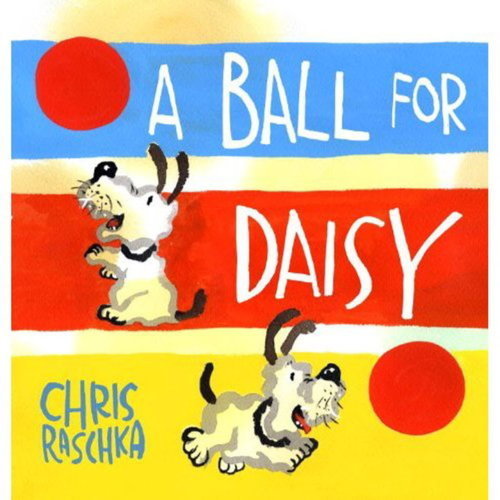 2011- A Sick Day for Amos McGee, illustrated by Erin E. Stead, written by Philip C. Stead (A Neal Porter Book, published by Roaring Brook Press, a division of Holtzbrinck Publishing). We read this a TON when I was sick.
2011- A Sick Day for Amos McGee, illustrated by Erin E. Stead, written by Philip C. Stead (A Neal Porter Book, published by Roaring Brook Press, a division of Holtzbrinck Publishing). We read this a TON when I was sick.
2010- The Lion & the Mouse by Jerry Pinkney (Little, Brown & Company)
2009- The House in the Night , illustrated by Beth Krommes, written by Susan Marie Swanson (Houghton Mifflin Company)
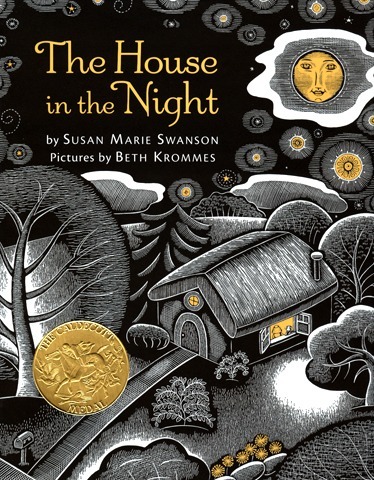 2008- The Invention of Hugo Cabret by Brian Selznick (Scholastic Press, an imprint of Scholastic)
2008- The Invention of Hugo Cabret by Brian Selznick (Scholastic Press, an imprint of Scholastic)
2007- Flotsam by David Wiesner (Clarion)
2006- The Hello, Goodbye Window illustrated by Chris Raschka and written by Norton Juster (Michael di Capua Books/Hyperion Books for Children)
2005- Kitten’s First Full Moon by Kevin Henkes (Greenwillow Books/HarperCollinsPublishers)
2004- The Man Who Walked Between the Towers by Mordicai Gerstein (Roaring Brook Press/Millbrook Press)
The post Caldecott Medal Winners appeared first on The Silver Pen.
Facebook: https://www.facebook.com/TheSilverPen
Twitter: https://twitter.com/hollyejacobs
Google Plus: https://plus.google.com/1042044534272...
June 9, 2014
Endocrine Disruptors


Endocrine Disruptors
The topic of endocrine disruptors has been in the news a lot lately. So much of the time, I feel like terms such as these are thrown around haphazardly without full explanations of the who, what, why, how. This drives me a bit bananas, to tell you the truth…especially when these products can lead to things like cancer. UGH.
Sometimes it seems as though much of the time we (myself included) are a mile wide, but an inch deep, not knowing what we (I mean me) are talking about. So there are these pesky things – endocrine disruptors – that we really do need to pay attention to!
Please allow me to give you the back story. Let’s start with the endocrine system. What is it you ask? Well, the endocrine system is a complex network of glands and hormones within the human body. These glands regulate many of the body’s functions such as growth, development, maturation, and the way in which various organs operate. The endocrine glands release hormones into the bloodstream that act as chemical messengers, traveling to different parts of the body in order to control various life functions.
An endocrine disruptor is otherwise known as an environmental toxin. Endocrine disruptors are chemicals that interfere with the function of the body’s hormone system. These chemicals turn on, shut off, or modify the signals that hormones carry to the rest of the body, causing parts of the body to not function properly. Studies suggest that endocrine disruptors may cause reductions in fertility, abnormalities in male reproductive organs, increases in mammary, ovarian, and prostate cancers, cancerous tumors, diabetes, obesity, increases in immune and autoimmune diseases, and some neurodegenerative diseases. This is all seriously gross and awful.
Endocrine disruptors come from a variety of sources such as chemical and industrial waste, pesticides, pharmaceuticals, oral contraceptives, detergents, food, cosmetics, and plastics. The number of substances believed to act as endocrine disruptors is very large, including both natural and synthetic materials. Some substances such as pesticides are intentionally released into the environment, while others are byproducts of industrial processes and waste disposal. Can you even believe this?
Here are a list of some of the endocrine disruptors (hopefully you have heard of some of them): BPA, Dioxin, Atrazine, Phthalates, Perchlorate, Fire retardant, Lead, Arsenic (hanging out in food and drinking water!!!), Mercury, PFCs, Organophosphate pesticides (used in chemical warfare during WWII), and glycol ethers. This list makes my heart and tummy hurt.
Where the heck are the Silver Linings, you ask (heaven knows that I was!). Well there are ways to protect against endocrine disruptors:
Educate yourself, family, and friends about them (which you are doing now by reading this post, thank you very much!). The Environmental Working Group is a super resource.Avoid using pesticides in your home, yard, or on your pet (because I have to ask: who in their right mind would use a pesticide on their pet for heaven sakes?)Avoid cooking, microwaving, and storing food in plastic or styrofoam containersBuy organic food whenever possible. I know that it’s more expensive, but your health is worth it. …and I’m here to tell you that medical bills are much more expensive than organic foods!Avoid foods that are high in fat such as cheese and meat whenever possible. I have been doing that for ages now. Every once in a great while, I jump off the vegan train and have a cheeseburger and you know what? I have a food hangover for literally days. It is amazing what a “clean” body can no longer tolerate!Ask your grocery store manager if the produce and animal-based products are from waters, farms, and rangelands that have been tested for pollution and contaminationDo not give young children soft plastic teethers or toys, because these toys may potentially leach endocrine disrupting chemicalsAvoid liquid soaps and lotions that contain Triclosan, which is an agent associated with endocrine disruptorsDo you have any thoughts or feedback? Any non-endrocrine-disrupting products that you love? I always love to hear from you!
The post Endocrine Disruptors appeared first on The Silver Pen.
Facebook: https://www.facebook.com/TheSilverPen
Twitter: https://twitter.com/hollyejacobs
Google Plus: https://plus.google.com/1042044534272...
June 6, 2014
Best Kept Beauty Secrets


Best Kept Beauty Secrets
As I was having my makeup done on the book tour (and asking every makeup artist for tips of the trade to get rid of the ginormous bags under my eyes!), I was thinking about how fun it is to ask girlfriends for advice, because they always give the best advice. So, this week, I put out an APB asking for your favorite beauty secrets. What a great response. Thank you so much!!!
In the graphic above are the ones that I have tried and definitely work for me and the list below are many of the ones that you suggested.
Grape seed & olive oil as a moisturizerArgon oil as a facial moisturizerCoconut oil as a body moisturizerPalmer’s Skin Therapy OilPure Source Rotorua Thermal Mud MaskVirgin coconut oil eye makeup removerDon’t use soap or cleaner to wash your face –use warm water and a makeup remover cloth insteadIf you want to use soap, use all natural and organicSkin rejuvenating tonic: an entire clamshell of mixed greens, some lemon juice, chia, hemp powder, flax, coconut oil, and an all-veggie green juiceAvocado smoothieWear a hat in the sun ALWAYS!Drink lots of waterGet a good nights sleepNever sleep with makeup onRemove make up with coconut oil or S.W. Basics of BrooklynEye Primer under Shadows (MAC paints or Urban Decay)Living Luminizer and MascaraLess is more when it comes to make upChanel eye brow pencilPh balanced face wash by a local maker15 minutes of UPS (unprotected sun) dailyTouche Eclat Radiant Touch is magic!Eating organic foodExerciseThe key to inner beauty is confidence in yourselfI happen to believe that the best kept beauty secrets are actually not those held in a jar, administered by needle or executed by knife. Just sayin’.
The truth of the matter is that our culture so often focuses on products to improve ourselves… and I am all for those, as you well know, but one of my favorite beauty secret is one not held in a jar or administered by a needle or (heaven forbid) found by a knife. Funnily enough, the best kept beauty secrets, those that are free and available to us all, are sometimes the hardest ones to remember (at least for me!).
My favorite beauty secret is laughter. It is our secret weapon and the start of any successful beauty routine. Who doesn’t look great when laughing? Right? The Silver Lining is that laughing is engaging and infectious, for you and for everyone around you!
Yesterday, I had the best belly laugh with one of my dearest girlfriends. It was one of those tears-running-down-the-face belly laugh. It was so bonding and gave me a ton of energy. No need for espresso if you have a laughter filled day!
As many of you know, humor & laughter sustained me during FBC. It was a Silver Lining that provided the balance and perspective to make my suffering more bearable.
Any other tips that you have? Please feel free to share here!
The post Best Kept Beauty Secrets appeared first on The Silver Pen.
Facebook: https://www.facebook.com/TheSilverPen
Twitter: https://twitter.com/hollyejacobs
Google Plus: https://plus.google.com/1042044534272...
This Weekend: Choose Happiness


This Weekend: Choose Happiness
The post This Weekend: Choose Happiness appeared first on The Silver Pen.
Facebook: https://www.facebook.com/TheSilverPen
Twitter: https://twitter.com/hollyejacobs
Google Plus: https://plus.google.com/1042044534272...
June 5, 2014
A Blessing For One Who Is Exhausted
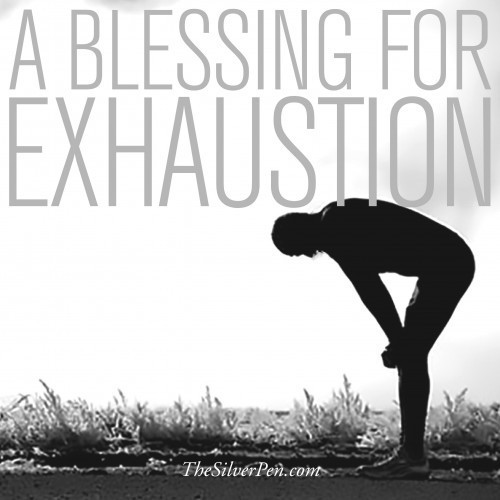

A Blessing For One Who Is Exhausted
Anyone feeing wiped out? Me! Me! Me! Me! Me! Me! After this spring, traveling each and every week for the past few months, I am completely and totally and utterly exhausted! Please don’t mistake my exhaustion for complaining because I’m definitely NOT doing that. In fact, I am so very grateful for each and every opportunity that I have had to distribute books and meet so many of you. Now, however, it is time to recover and restore my health. Boy oh boy did I ever learn firsthand how difficult it is to live in an airport/on an airplane! So, this is my time to focus wholly on my health and it sure feels good! For those who join me in this state of exhaustion, here is a beautiful blessing. Please oh please don’t live here, but rather take the time to care (“excessively”) for yourself. After all, if I learned one thing after having had FBC, if you don’t have your health you don’t have a single solitary thing in the world!
A Blessing For One Who Is ExhaustedWhen the rhythm of the heart becomes hectic,
Time takes on the strain until it breaks;
Then all the unattended stress falls in
On the mind like an endless, increasing weight,
The light in the mind becomes dim.
Things you could take in your stride before
Now become laborsome events of will.
Weariness invades your spirit.
Gravity begins falling inside you,
Dragging down every bone.
The tide you never valued has gone out.
And you are marooned on unsure ground.
Something within you has closed down;
And you cannot push yourself back to life.
You have been forced to enter empty time.
The desire that drove you has relinquished.
There is nothing else to do now but rest
And patiently learn to receive the self
You have forsaken for the race of days.
At first your thinking will darken
And sadness take over like listless weather.
The flow of unwept tears will frighten you.
You have traveled too fast over false ground;
Now your soul has come to take you back.
Take refuge in your senses, open up
To all the small miracles you rushed through.
Become inclined to watch the way of rain
When it falls slow and free.
Imitate the habit of twilight,
Taking time to open the well of color
That fostered the brightness of day.
Draw alongside the silence of stone
Until its calmness can claim you.
Be excessively gentle with yourself.
Stay clear of those vexed in spirit.
Learn to linger around someone of ease
Who feels they have all the time in the world.
Gradually, you will return to yourself,
Having learned a new respect for your heart
And the joy that dwells far within slow time.
–John O’Donohue, from “Blessings”
The post A Blessing For One Who Is Exhausted appeared first on The Silver Pen.
Facebook: https://www.facebook.com/TheSilverPen
Twitter: https://twitter.com/hollyejacobs
Google Plus: https://plus.google.com/1042044534272...
June 3, 2014
USS Ronald Reagan in Santa Barbara
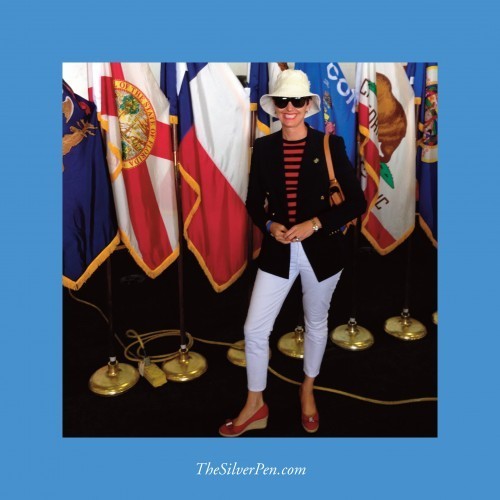

Over the weekend, the aircraft carrier the USS Ronald Reagan was docked in Santa Barbara. The HOTY & I had the great and amazing good fortune to tour it. Uh huh. I am still pinching myself. I have to tell you that it was one of the coolest most amazing and jaw dropping experiences of my life. Talk about a major Silver Lining, one that I will always remember!
Now we were not the only ones on the ship. We were invited to be a part of a reception on board. When the HOTY wandered about (which he is apt to do), he met an officer and asked him, “Is there anything that we need to see?” Well, the officer turned out to be the MOST amazing Silver Lining when he said, “Come with me.” He proceeded to take us to places that many if not most civilians do not get to see. He could not have been more charming or generous with his time, information, and enthusiasm!
We learned a TON on this particular afternoon. Did you know that the USS Ronald Reagon is the most effective and versatile fighting vessel in the world? Or that it was the first nuclear-powered warship of any kind to be named after a former president who was still living at the time? Or that it required over $4.5 billion to make (Uh-Huh!)? This warship has been apart of Operation Iraqi Freedom, Operation Enduring Freedom, has served in the Persian Gulf and the Philippines. Yeah… this warship is kind of a big deal!
The ship holds 5,500 sailors (75% men & 25% women), most of whom were able to break away from their normal schedule at sea and come ashore to experience Santa Barbara for a few days. It was wonderful to see all of the uniforms in and about town. I never tire of saying “THANK YOU” to those in uniform.
Here are some more photos from the day:
THIS is where OFFICERS sleep! Teeny, tiny bunks, 3 to a room. And the sink? Also for THREE officers. Can you imagine how small the quarters are for the enlisted folks? Wowsy. This gives me a whole new appreciation for space!
Classic, right?!? We went onto the Commander’s deck – the place where it ALL happens! Oh my goodness, was it ever A-MA-ZING! They draw on the window numbers, locations, graphs, etc. It was so fab.
We went onto the Commander’s deck – the place where it ALL happens! Oh my goodness, was it ever A-MA-ZING! They draw on the window numbers, locations, graphs, etc. It was so fab.
 Here is the ship! Perhaps I could have started with that image. Alas.
Here is the ship! Perhaps I could have started with that image. Alas.
 It is so hard to give you the full scope on the size of the ship. Imagine 3, football fields end-to-end.
It is so hard to give you the full scope on the size of the ship. Imagine 3, football fields end-to-end.
 This sign kinda scared me. Actually, it kinda scared the officer who was touring us. You see, these are the people who, when there is a fire or biological incident literally run toward and often into the middle of it. These folks are “nuts” as was described to us, but also admired and appreciated more than any other people on the ship.
This sign kinda scared me. Actually, it kinda scared the officer who was touring us. You see, these are the people who, when there is a fire or biological incident literally run toward and often into the middle of it. These folks are “nuts” as was described to us, but also admired and appreciated more than any other people on the ship.
Patriotism everywhere we looked!
 Each of us wore a pin to get on the boat. I thought it looked quite chic against the HOTY’s seersucker suit.
Each of us wore a pin to get on the boat. I thought it looked quite chic against the HOTY’s seersucker suit.
 The (heavily armed!) Coast Guard patrolled the waters around the ship while it was docked in the channel. Every time I turned around I saw another one! I certainly felt safe.
The (heavily armed!) Coast Guard patrolled the waters around the ship while it was docked in the channel. Every time I turned around I saw another one! I certainly felt safe.
Touring this massive warship reminded me of the utmost gratitude & appreciation that I have for the US Navy and all of the men and women in the armed services who serve our country each and every day. By the way, the officer who toured us works 16 hour days, 6 to 7 days a week. Yes, it is that intense.
The post USS Ronald Reagan in Santa Barbara appeared first on The Silver Pen.
Facebook: https://www.facebook.com/TheSilverPen
Twitter: https://twitter.com/hollyejacobs
Google Plus: https://plus.google.com/1042044534272...










